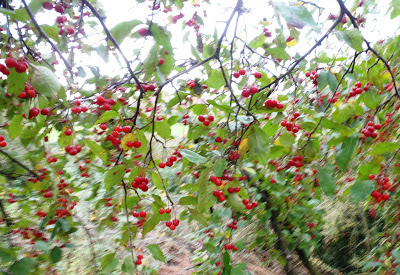The Court Leet is a wonderful occasion and also and important ancient rite. It is a place where the citizens of Southampton can air their grievances in front of a Jury of Alderman (including past Mayors and Sheriffs) and the 575th Sheriff of the City (Councillor Ivan White) as Foreman. The Court was originally held at the Cutthorns, a raised dais at the top of the common but nowadays it is ensconced in the more comfortable surroundings of the Council Chambers in the delightfully light and airy Guildhall.
Last year, with the help of the Court Leet, it was established that picking fruit and nuts with families was legal on Southampton Common and also the other Southampton parks, provided no unnecessary damage, such as digging up trees was caused (although quite why anyone might want to vandalise trees in this way is a mystery to me).
This year our aim was to get full permissions established for the development and improvement of the Community Orchard on the Octavia Rd. Open Space at Mansbridge. Louise Owen spoke for the Southampton Woodcraft Folk, who have taken an active interest in the orchard, I was there in my guise as the Urbane Forager and we were ably supported by Claire Diaper and other friends.
The court was opened by our city's Town Crier and presided over by the Head of Legal and Democratic Services. Many interesting articles were discussed and a good number of them were passed swiftly, including (I’m pleased to say) a 20mph speed limit in residential areas of the city and several cycle path improvements. The court is always attended by school children and the youngsters of Bitterne Park confidently laid a presentment to the court regarding parking and access near their school. It’s great to see children getting so actively involved in the democratic process; a lot of adult citizens could learn something valuable from these youngsters.
 |
| The Woodcraft Folk Perspective |
As it came to our own turn to stand up and deliver our own presentment, the nerves began to kick in a little bit but the trepidation soon abated. Unsurprisingly, everyone in the Jury agreed that the Community Orchard was a wonderful idea; they saw that it would benefit the good citizens of Southampton and they wholeheartedly passed the motion without further ado.
After the court had been closed by the Town Crier we were invited to attend a feast, laid on by the city; the sandwiches were tasty as were the apples and, although I’m not sure they were organically grown or locally sourced – but they could be next year, if they want…
You can download or print off a copy of our, Presentment for a Community Orchard in Mansbridge here.
































